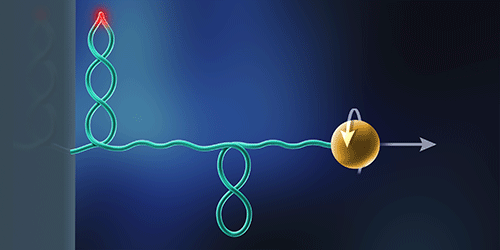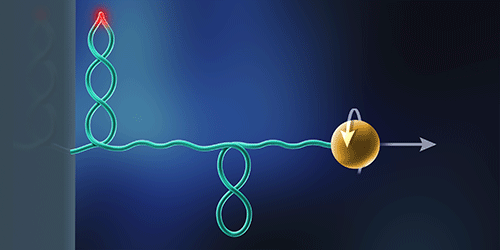Twisting DNA Locates its Defects
Overwind a string and it buckles, twisting back on itself to form a coiled loop. The same buckling occurs when DNA—biology’s string—is tightly wound. Now researchers have shown that this buckling can be used to pinpoint a single mismatched base pair in a DNA strand and they believe a similar process could occur inside cells.
Andrew Dittmore at the National Institutes of Health, Maryland, and colleagues wound DNA strands using an established technique for manipulating biomolecules. In this method, known as magnetic tweezers, one end of the DNA is fixed to a solid surface, while the other end is tethered to a magnetic bead, which is turned with a magnetic field. Using this technique, a buckling event can be detected as a sudden decrease in the DNA’s length.
To test the efficacy of the technique for pinpointing the location of base-pair defects, the team designed a series of DNA chains with a single precisely placed error of between 1 and 16 adjacent mismatched base pairs. The team saw that twisting caused their DNA to buckle twice: First, a buckle and loop formed at the defect, resulting in a sudden drop in the strand’s length. Then the strand continued to shorten as more of it became coiled up in the loop, and the loop moved toward the solid surface. Finally, once the loop hit the surface, a second buckle and loop formed.
The researchers demonstrated that the decrease in the DNA’s length between the formation of the first and second loops corresponded to the original distance between the mismatched pairs and the surface. They showed that even for the case of just one mismatched pair, their technique could always pinpoint the defect’s location.
This research is published in Physical Review Letters.
–Katherine Wright
Katherine Wright is a Contributing Editor for Physics.





